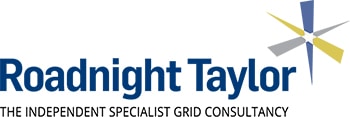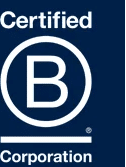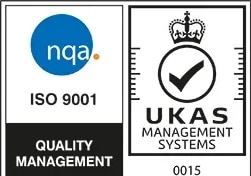
Podcast: Grid News and Views #13
Summary:
Connectologists® Pete Aston and Kyle Murchie are back with the latest Grid News and Views! After a four-month break, they dive into the big changes shaping Britain’s grid connections — from NESO’s new Gate 2 timeline to long-awaited reforms in network charging.
They break down what the new Gate 2 process really means for developers: complex timelines, delayed offers, and growing uncertainty around project acceptance and design changes. Pete and Kyle also unpack the latest on connection charging — including DCP461 and CMP460, two major reforms aiming to fix how shared infrastructure costs are split across projects.
Plus, they tackle the UK’s unexpected demand boom: data centres now make up most of the 100+ GW of new demand in the queue — more than Britain’s entire current peak demand! What does this mean for future connections, system design, and government policy?
If you’re working in energy, development, or infrastructure, this episode is your quick guide to the fast-moving world of grid connections and reform.
Transcript:
00:00:41 – 00:00:56 – Pete Aston
Hello and welcome to another Connectology® podcast from Roadnight Taylor. I’m Pete Aston and I’m joined by my colleague Kyle Murchie. And we are going to be doing another Grid News and Views podcasts for you. It’s actually been about three or four months since we’ve done one.
00:00:56 – 00:00:58 – Kyle Murchie
As long as that, wow.
00:00:58 – 00:01:11 – Pete Aston
Yeah, I believe we recorded the last one 24th of June – July, August, September, October. Four months, gracious. Three and a half months.
So yeah, I think our listeners, all two of them have been clamouring for another one.
00:01:11 – 00:01:12 – Kyle Murchie
Time flies when you’re having fun.
00:11:12 – 00:01:50 – Pete Aston
Yes. Fun being Connections Reform, I think. So, we’re going to dive straight in. So, since we last did a Grid News and Views podcast, lots happened. So, we’ve gone through all of the NESO portal and submission, Gate 2 submissions portal not working properly, timeline being extended.
So, all Gate 2 applications are in by the end of August. So, by now NESO should have done their initial checks on those Gate 2 applications and the DNOs should have done the same. But I guess the big news is that came out what, a couple of weeks ago was NESO’s new timeline.
00:01:50 – 00:01:51 – Kyle Murchie
Yep.
00:01:51 – 00:02:03 – Pete Aston
So we’re just going to drill into that a little bit, to sort of work through that because there’s been a little bit of consternation in the industry, isn’t there Kyle, on, on the actual sort of end date of the timeline.
00:02:03 – 00:02:47 – Kyle Murchie
Yeah, absolutely. And I think one of the first things that you look at, looking at the timeline is, it is quite complicated. There’s lots of arrows and additional bits of information that you can gleam.
But some of it does contradict slightly or a few areas where there’s kind of double negative. So, it does take a little bit of time to just get your head around what it actually says. What we’ve tried to do is build a little timeline, kind of pulling out those key dates of if you’re, you know, if you’re expecting a connection date in 2027 when you’re going to expect your offer. Similarly, if you were in 2032 then what does that look like? Just try and make it quite clear.
But yeah, even kind of drilling into it, there’s quite a bit of flexibility in those dates.
00:02:48 – 00:03:03 – Pete Aston
So, in terms of maybe let’s pick up on next steps, on the timeline and sort of end of timeline just to get a sense of the scope. So next steps I believe NESO are currently, and the DNOs are currently doing detailed checks.
00:03:04 – 00:03:31 – Kyle Murchie
Yep, that’s right. So, by week commencing, the end of week commencing the first week in December, sorry, yes. Then there’ll be notifications issued but it’s noting that those notifications might still be subject to detailed checks.
So, NESO may not have completed detailed checks, ideally as many will be completed as possible as many will be completed as possible but it does state that detailed checks…
00:03:31 – 00:03:34 – Pete Aston
And to be clear, what’s that notification going to tell you?
00:03:34 – 00:04:05 – Kyle Murchie
So, it’ll tell you whether you’re Gate 1 or Gate 2, importantly.
There has been a bit of questioning on whether it’ll also confirm whether your advancement has been successful or not. Interestingly, the DNO statement box, it does talk about advancement requests and whether that has been successful or not. But in the transmission one it doesn’t go as far as that possibly because at transmission level it will be subject to study, and the studies won’t have been completed by that point. So really, it’s the reordering of the queue, the output of the reordering of the queue.
00:04:10 – 00:04:18 – Pete Aston
So basically, by the end of first week of December you know whether you’re in or out, and whether you’re going to be before 2030 or sort of 2030 to 2035.
00:04:18 – 00:05:07 – Kyle Murchie
Yeah, for the details and actually any more information.
So, if you’re sitting in quite a comfortable position where you know the works quite well, you know a lot of the background of your project either at transmission or distribution level and you know that you’re definitely, you know, you’ve met all the criteria and you’re really comfortable with that then actually notification should just be a confirmation.
Yeah, and we’ve had quite a few clients who’ve said well hold on, I’ve already received an email from the DNO that says you’ve passed your initial checks, you’ve passed your detailed checks, you passed your redline boundary checks. NESO have now confirmed that you’ve passed their initial checks. What more is there?
Surely, I am going to get a Gate 2 offer. It’s kind of indicated but this is the, that kind of drawing the line in the sand where the queue has been reordered by NESO, them communicating it out.
00:05:07 – 00:05:32 – Pete Aston
And then following that notification offers start to come out. And they’re going to come out in sort of groups depending on whether your transmission, distribution, depending on your connection date. So, it’s going to be the 2026, 27 offers out first, then offers up to 2030, then offers up to 2035 and end stop, is well into next year, isn’t it?
00:05:32 – 00:06:27 – Kyle Murchie
Yeah, so latest offers based on the timeline would be by the end of September 2026. And obviously those offers would be ideally coming out with a three-month window in which to accept.
Interestingly, that’s a question as well that was posed to NESO in terms of guarantee of that and confirmation of the timeline because as we know historically, a three month acceptance window is one thing, but that’s also assuming there aren’t any changes to be made.
So does that then have an impact for us and a lot of the industry? The question is, well, what impact does that have on one my project and the build out of course, but then also the next window and how can assessments be done if there are going to be quite a lot of projects that might not get or might not be an accepted position until the end of 2026, maybe even later.
00:06:28 – 00:07:09 – Pete Aston
And of course, there’s no guarantee that all the Gate 2 offers will actually be accepted. So, there could be some schemes that actually don’t get accepted and even though they get a Gate 2 offer they might go, well, something’s happened that means I don’t want to.
Another interesting thing about the Gate 2 offers will be whether they contain any changes. So I’m working on a few schemes where transmission connections, where we know that there’s already been a change in the connection design you’ve been working through it, and it’s like is that going to be captured in the Gate 2 offer or are we going to get the Gate 2 offer out and then they’re going to do an agreement to vary to capture those changes after that. So that’s still unknown.
00:07:09 – 00:07:53 – Kyle Murchie
Yeah, I think particularly at distribution level the DNOs have all indicated slightly different approaches to some of those changes. So yes, a lot more to, to know and understand and I suppose for, you know, we’re not going into, we could actually bring up the timeline, get to real specifics but you know, it is all out there and as I said we’ve communicated quite a bit on some specifics and trying to break it down a bit more but the industry, a lot of the trade bodies, as well as developers individually have obviously fed back quite a lot to NESO, and yeah, and there’s definitely a need to close that gap over the coming weeks to really understand exactly what that next part of the process looks like.
00:07:53 – 00:08:05 – Pete Aston
But we’re looking forward to getting stuck into some of the Gate, reviewing some of the Gate 2 offers when they come out, I guess.
First ones, are we expecting out maybe the end of this year, or is it going to be January, do you think?
00:08:05 – 00:08:57 – Kyle Murchie
Yeah, an optimistic Kyle would say Christmas present. Christmas present, yes. We might get some coming out I think particularly those that are, you know, anything that’s 2026, 2027, you know, if the kind of indications are that well those are not going to go through full system studies because effectively unless, you know, unless there’s some sort of major change then they should already be pretty clear on what the solution would look like anyway.
So, there shouldn’t be any reason why those can’t come out fairly quickly. It’s then that next wave after that where studies do have to be completed, because of course a DNO can’t issue a variation until it’s received an offer from NESO which relies on a system study from the relevant TO which relies on a setting of what the CPA is and what the kind of parameters are.
00:08:57 – 00:08:58 – Pete Aston
They need to explain CPAs, Kyle.
00:08:59 – 00:09:19 – Kyle Murchie
Oh, construction planning assumptions. So those are effectively the assumptions used as kind of part of the modelling process. So, it might state the sort of assumption on how certain background demand is recorded for example, how certain technologies are studied, just to make sure it’s consistent and appropriate.
00:09:20 – 00:10:31 – Pete Aston
And there’s a very interesting piece here around how DNOs then you know, restudy their offers, re-cost their offers. Because there is a possibility, isn’t there of some schemes getting Gate 1 offers and then effectively being out the queue and then the minimum scheme changing for connections DNO’s having to potentially restudy that, and then what if actually that changes your GSP, which in a few circumstances it could. So I think NGED, it was last week did a webinar and I sat on it just listening in and they explained how they, if some of the POCs are going to change some of their schemes after having done the restudy process that they might then have to do a sort of, it’s not project progression but it looks like a sort of project progression type information exchange with NESO and the TO’s and then they’ve got to get a response back and before the Gate 2 offer can be issued. So, there’s a lot of complexity.
00:10:33 – 00:11:33 – Kyle Murchie
Yeah, absolutely and as you say it could be quite a small number of projects because projects that have relatively early connection dates that didn’t trigger new GSPs, for example, well it’s unlikely that the point of connection would change significantly. Be interesting actually if you’ve got a bay connection, a 30kV bay connection but actually a project ahead that falls out that was connecting to an overhead line, that’s probably the really interesting nuggets for earlier projects, where can they get in on those slightly closer connections.
But actually, for a really close connection date that’s got quite a lot of implications. If you already have an ICP, you’re already working towards a plan then actually, it might save you from a capex point of view. But to move from a busbar connection to an overhead line might not actually be feasible. So it’ll be interesting how that discussion really happens because it’d have to be open dialogue with each customer.
00:11:34 – 00:11:59 – Pete Aston
So, we need to move on from Connections Reform in just a while. But before we do, we just wanted to pick up on third party works. So, this is when a transmission connection has an impact or potential impact on the distribution network. And have you got any idea about how changes to transmission connection designs or whatever might impact on the requirement to do third party works?
00:12:00 – 00:13:01 – Kyle Murchie
Yeah, so it’s going to be reassessed as part of Gate 2 but for projects that were I think it was 2026, 2027 projects. That’s right. Ultimately there shouldn’t be any changes so there’s maybe a bit more certainty there. But for those that are later then it’s just noting that that will be reassessed. So, one thing we’ve kind of noted is there’s an awful lot of additional well a lot of obligations are really back on the developer rather than it sitting with likes of NESO.
So also, we had CMP328 which was trying to address some of those concerns in the industry that was sent back and then has since been deprioritised. So, I think it’s fair to say there’s still a bit of work to be done.
Although offers might come back out with reassessed third party works there’s still a bit of a question of whether is that the end game argument would be no, there’s still more to be.
00:13:02 – 00:13:15 – Pete Aston
But it seems like the owners would still be on the developer to contact the DNO and trigger that process which is a bit clunky but might add another layer of complexity into some of these schemes potentially.
00:13:15 – 00:13:30 – Kyle Murchie
Yeah, and I think if any other Mod does come forward or that’s kind of reprioritized it’s unlikely to do it in the, it’s not going to happen during 2026. So if you’re getting offers out and you trigger that, then that’s going to be the owners on the developers, really.
00:13:43 – 00:14:13 – Pete Aston
Let’s move on. We wanted to bring up the subject of connection charging. So, there’s some modifications bubbling around at the moment for connection charging and Mods in the system. And just to say if anyone’s interested in looking at all the Mods that NESO’s in charge of, NESO does produce a modification tracker that you can go find on their website. It’s very useful and you can get a good summary of the status of all the modifications that they’re running.
00:14:13 – 00:14:14 – Kyle Murchie
Which is quite a lot.
00:14:15 -00:14:31 – Pete Aston
Which is quite a lot, yeah. That would be CUSC Mods, Grid Code Mods, SQSS. I think the other one is STC as well – that’s the four that they cover.
So yeah, can you sort of quickly summarise the Mods that are going through around connection charging? Because we’ve been…
00:14:31 – 00:15:58 – Kyle Murchie
Yes, or Boundary. Yeah. So, we’ve kind of referred to it before as either network boundary charging, which is what the industry has kind of gone for now. We’ve more frequently called it SGT charging.
So it’s just noting that effectively we’re talking about the same thing and for regular listeners they’ll know we’ve done quite a lot on that topic over the last few years actually with it kind of coming to a bit of a, coming to a head with a conversation this room actually with Innova, Centrica, Diageo and an Octopus Generation, just this summer actually and we were exploring, having those sorts of developers in the room coming from very different angles; obviously Diageo, coming from a decarbonisation angle, not playing in the energy market for example, to household names like Centrica and Octopus, with sometimes very different views on the future of different elements in the industry.
So, it was good to explore that and there’s been quite a few sessions with industry since then, either at a transmission level or even kind of Ofgem sessions. And that has actually led to some movement.
So, we’ve now got two Mods that have kicked off, one formally that has a working group in place which is DCP461. So, we don’t normally talk about DCP’s.
00:15:58 – 00:16:00 – Pete Aston
DCUSA change proposal.
00:16:00 – 00:17:59 – Kyle Murchie
DCUSA change proposal, exactly. So, this is effectively led by Electralink, Electralink sit in as the as the kind of code admin from a DCUSA perspective and this is looking quite specifically at a kind of concept that a few DNOs have been floating around but it was proposed effectively via NGED and it’s much more succinct in that it’s looking at a change around kind of catching basically the charge.
So at the moment as many people know, if they’re sitting behind untriggered SGT charging, if there’s five of you, you’ll share that total cost, but if one of you drops out that then just gets reshared across four. So, all the way down to if you’re the only one you can be holding the can. So the idea of this Mod would be to effectively have an allocation factor applied so that you would only, you’d know on day one what your proportion was and that wouldn’t change.
If other people fell away then that would be effectively socialized. Lots of complexity around exactly how that would work. Importantly the DNOs all do something quite different from one another at the moment. So, if that was to be brought in there’s a question as well of standardization.
And then there’s a kind of sister Mod, so to speak, the CMP460. Now we’ve got 460 and 461. That is just coincidence, we couldn’t have written that if we tried. But yeah, 460 has been put forward by Innova, Joe Coelbrook and we’ve been supporting along with some others and that has now formally kicked off. The nominations are closed on the 17th of this month and from there the working group will get set up. So, kind of early November really is when the working group will…
00:17:59 – 00:18:02 – Pete Aston
Does that have a slightly wider scope in terms of looking at a few more different options?
00:18:02 – 00:19:00 – Kyle Murchie
Yeah, it does. And while it’s therefore focusing much more on the transmission aspect and whether socialization through TNUoS, kind of considering that there’s a difference between infrastructure assets and connection assets and how that’s charged, so it’ll take that wider view. It will therefore potentially inform a future DCUSA Mod. If it identifies that actually the right way to do something is through the distribution system and charged in that way, then there might be a further Mod. It’s probably important to note that the timescales for each are very different. The DCUSA Mod is looking at a much, much faster change. Trying to bring something into play for springtime next year. Not quite in alignment with Gate 2 offers but as close as possible.
Whereas CMP 460 isn’t going to be issuing. Well the plan is to issue a final proposal to Ofgem in September 2026.
00:19:00 – 00:19:12 – Pete Aston
So, it’s possible you could have an interim solution of a CAF solution followed up by, I don’t know conceptually having SGTs fully socialized a bit later.
00:19:12 – 00:19:36 – Kyle Murchie
Absolutely. Potentially that could be the way and, I suppose the first hurdle is knowing well at least if I know on day one what it is, at least that fixes it. Whereas at the moment you’ve just got too much risk. And it’s been kind of flagged as well that the issue is a little bit hidden because a lot of people don’t necessarily, a lot of developers don’t necessarily accept those offers with those quite significant charges, so yeah.
00:19:36 – 00:20:38 – Pete Aston
Well, we’ll obviously feedback via podcasts and other means on sort of the updates and progress on those Mods.
The last thing we wanted to pick up on before we have to run off to other meetings was just around sort of demand schemes. So I guess historically a lot of the, well over the last few years and Connections Reform that’s all been generation led energy schemes led and significantly solar and batteries whereas the demand sort of has just been a tag along hasn’t it on Connections Reform if you happen to be a transmission connected demand, well you have to do a Gate 2 application but you know it was sort of just a smaller piece but, but it’s becoming apparent that demand is actually a massive, massive area of growth. And we have seen some numbers floating around haven’t we of what the level of accepted demand schemes there are in the queue out there.
00:20:38 – 00:21:37 – Kyle Murchie
Yeah, I mean it’s worth pointing out that going back to 2020, this time two years ago effectively the demand queue was in the 20s of gigawatts and fast forward a year is then in the early forties and therefore it was the early forties sort of figure that was used to inform what Connections Reform would look like. But now we’re at, well some figures vary but certainly over 100 gigawatts worth of demand in the queue of which was it 2/3 or 3/4, data centers. Yeah, which is, which is a massive increase. So, you know that’s a big question of how does that get, well how does that get studied, you know from a background point of view how does that get fed into the model locationally as well, big changes, you know, a lot of hydrogen based in Scotland, a lot of data center demand in London. Exactly.
00:21:38 – 00:21:40 – Pete Aston
Exactly. Slough.
00:21:40 – 00:21:48 – Kyle Murchie
So quite challenging from that perspective. But also, then what does it mean for the next phase and for the next window?
00:21:48 – 00:21:56 – Pete Aston
But in context there’s probably more data centers with accepted offers in the queue than there is peak demand in the whole of the country at the moment
00:21:56 – 00:21:57 – Kyle Murchie
Oh yes.
00:21:57 – 00:23:01 – Pete Aston
And that’s the context that we’re talking about. So, it’s not just a big number, it’s a very, very big number. And I guess my thoughts at the moment is probably you don’t need that many data centers I’m assuming in the country, but maybe the government has a different view.
But I just get the feeling like what happened with batteries particularly and solar led to sort of Connections Reform, Clean Power 2030 caps effectively on those technology types. Are we going to see the same thing come in for these sorts of hyperscale demand type schemes? What’s going to happen in the first connection window that opens, transmission window that opens next year sometimes? Is it going to be another free for all, for lots of more data centers to join the queue? I think this is a question probably for government, Ofgem, NESO to really chew over as to what’s going to happen. And I guess no one knows at the moment.
00:23:02 – 00:23:40 – Kyle Murchie
No one knows, no.
But yeah, the factor of there’s the demand and the impact that has. But also at this moment time, as we’ve discussed on previous podcasts, is the way that demand is assessed and secure supply requirements etc. That we could end up that a lot of those offers have more than one bay.
So, a similarly sized generator might be looking at having a single bay connection. If they have three bays or even more then that then has an awkward impact on connection opportunities. So, it’s definitely something that needs to be looked at swiftly.
00:23:40 – 00:24:49 – Kyle Murchie
And there’s two other things we just wanted to pick up on demand as well. One is another CUSC Mod, CMP417. Do you want to very briefly highlight what that is? Yeah. Well, you’re the, you’re the man. You’re on the grip.
But yeah, so CMP417 has been around for, for quite a while. That’s why it’s a bit of an earlier number but effectively it’s trying to move kind of away from final sums. So, the security liability methodology that’s used for final demand is different to generation of storage. And effectively there’s no such thing as a, LARF and SIF. There’s no factors involved which actually reduce the amount that you’re liable for. You’re liable for the whole lot, even if it could be reused, or partially reused. So, the idea is to get rid of that and move everybody on to the same methodology, although noting that the wording isn’t perfectly transferable to demand.
So that’s what that working group’s looking at. It’s been running for a long time and was paused because of Reform. A lot of people have dropped out over that period. So, there’s a bit of a light membership at the moment.
00:24:50 – 00:25:03 – Pete Aston
But I guess the hope is, in short, there’s going to reduce security requirements for demand customers. But it’s probably not going to actually get implemented into your MM statements until early 2027.
00:25:05 – 00:25:13 – Kyle Murchie
Early 2027, which is a good question around securities, because that’s another big topic around where the securities are delayed further and kind of fixed until early 2027.
00:25:13 – 00:25:49 – Pete Aston
So, we’ll have to pick up on that another time because we are running out of time very quickly. I think the last thing we just wanted to pick up on demand was just around the issues that hyperscalers have with, these large transmission connections because demand customers cannot build transmission network at the moment. And so there is some talk going on in the industry around how can hyperscalers build transmission network? Should they, do the TOs need to do something different? So, yeah, I think there’s going to be some more developments on that, we guess over the next few years.
00:25:50 – 00:26:19 – Kyle Murchie
Yeah, I think the positivity is, I mean we were on one of those, sessions with DESNZ and Ofgem and it’s positive that the conversation is going forward. So, with all these conversations it starts off extremely broad, lots of different things to talk about and then whittle down, well, what are the next steps?
So, we’re far away from clear cut solutions for all of those different components. But the conversations definitely started, and the government are aware of the importance, which is a good start.
00:26:20 – 00:26:36 – Pete Aston
It is, probably lots more things to discuss, but we’ll have to stop talking now, Kyle. So we can get off and have some other meetings, thank you everyone for listening. We will be doing some more podcasts, fairly shortly, within the next month, or so.
00:26:36 – 00:26:36 – Kyle Murchie
Quite a few guests coming in.
00:26:37 – 00:26:44 – Pete Aston
Yeah. So some to look out for on your feed. So for now, goodbye and thanks for listening.
00:26:44 – 00:26:45 – Kyle Murchie
Thanks a lot.





